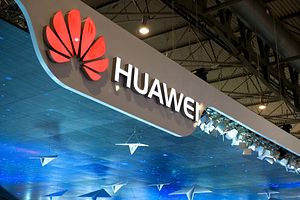As part of the broader fight over 5G technology, U.S. companies have been banned from doing business with Huawei. Starting with Google, the latest company to break off ties with Huawei is ARM, which is based in England but uses U.S.-origin mobile-chips. Slowly but surely, Huawei is being cut off from its suppliers and its markets. Its expected that Huawei will miss future growth targets as a result.
But even though it is on the backfoot in the West, the Chinese technology giant might survive in another part of the world. While international media explodes with controversies over Huawei, the company has been quietly extending its footprint in South Asia, in particular. Working to avoid any more damage to its bottom-line growth due to the recent loss of sales abroad, Huawei has focused on strengthening its foothold in the massive South Asian market.
Having convinced South Asian nations with a flourishing middle class to adopt its 5G technology, Huawei was already well established in Pakistan, Bangladesh, and Sri Lanka but it still had yet to take off in India. Thus, Pakistan and Sri Lanka will be unveiling Huawei’s 5G services by the middle of 2020, while Bangladesh will be on board in 2021. Considered a prized market, this region represents one quarter of the global population and its mobile internet density is projected to rise as high as 61 percent by 2025.
Therefore, even though the feud with the United States has begun to cut the Chinese tech-giant’s growth — its carrier business fell by 1.3 percent last year — revenues worth $105 billion were generated from the South Asian sector in 2018.
Huawei estimates about the region looking out over the next five years state that, “The number of 5G subscribers will top 80 million, internet traffic will grow by five times in total, more than 20 smart cities are on the way, and wireless, digital and intelligent equipment will improve social productivity by 4% to 8% on average.”
The only South Asian setback has been that India still needs a lot of convincing regarding Huawei and is mulling over the 5G wireless technology trials due at the end of this year. As factors like security issues, spying allegations, and U.S. pressure have changed the scenario, India has given preference to South Korea’s Samsung and it has two new component manufacturing entities now.
Replacing Huawei, Samsung Venture Investment Corp plans to fund Indian startups in electronics hardware and software along with some hefty investments in the days ahead. In light of these developments, it looks like the Indian market has been lost by the Chinese tech giant.
Neighboring Pakistan plans to test 5G technology this year as well. The Pakistan Telecommunication Authority (PTA) will try out the services in certain areas first on a free trial basis for a time period of three to six months. As per the draft framework document, these trials would take place after authorization by the PTA.
During his three-day visit to Pakistan recently, Chinese Vice President Wang Qishan inaugurated several projects and witnessed the inking of several memorandums of understanding (MoUs). Notably, one of these agreements pertained to the launching of a highly advanced Huawei Technical Support Center. The Chinese tech-giant is going ahead with massive investments in Pakistan.
At another high-level meeting between the founder of Huawei, Ren Zhengfei, and Pakistan’s Prime Minister Imran Khan in Beijing last month, it was decided to establish a data or “cloud center.” An MoU was also signed between Huawei and the Ministry of Planning for collaboration in the fields of local manufacturing, technology transfer and artificial intelligence to help the country’s economy.
According to some estimates, 5G technology can bring industrial opportunities worth $1.2 trillion to the South Asian and Southeast Asian region in the next five years.
Moreover, Pakistan’s most popular data network, Zong 4G, can also provide Huawei with the foothold it is looking for locally. With more than 10,000 4G sites across Pakistan, Zong has had unprecedented success in Pakistan. Having announced a partnership for digital transformation early this year, Zong 4G and Huawei will be integrating Artificial Intelligence (AI) and big data to provide consumers with fast, uninterrupted connectivity.
Well-entrenched in the country since 1998, Huawei has a large network of 1,600 employees, out of which 91 percent are Pakistan nationals. Prospects look bright, but the pricing of 5G services could prove an impediment in Pakistan. Data services are already more expensive in the country than in other developing countries, and as 5G is expected to be costlier than the current rates, it might be difficult to provide the low prices that could attract customers.
Sabena Siddiqui is a foreign affairs journalist and geopolitical analyst with special focus on the Belt and Road Initiative, CPEC and South Asia.

































